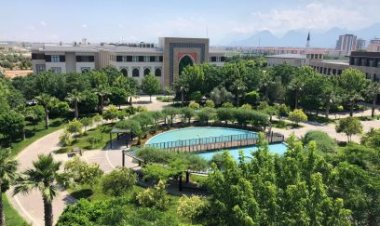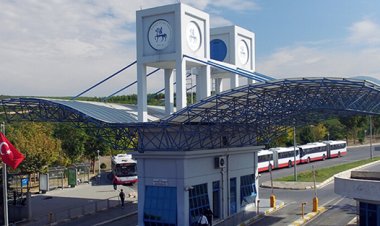Long-term effect of nanosized boric acid powder on optical properties of polymer infiltrated ceramic CAD-CAM material
Long-term effect of nanosized boric acid powder on optical properties of polymer infiltrated ceramic CAD-CAM material Sasany, Rafat; Eyüboğlu, Tan Fırat; Özcan, Mutlu The current study investigated the effect of boric acid (H3BO3) nanosized powder on the optical properties of a Computer-Aided Design and Computer-Aided Manufacturing (CAD-CAM) polymer infiltrated ceramic material. Specimens (n = 60), (15 x 8 x 1.5 mm(3)) were fabricated from a polymer infiltrated ceramic network (PINC) (Vita Enamic, Vita Zahnfabrik, VITA-shade scale A2). Boric acid (B) nano powder was applied to Vita Enamic in half of the specimens (n = 30), while the other half was left untreated (NB) (n = 30). Aging for all specimens was performed for 5 h at 134 degrees C. Color coordinates (L*, a*, and b*) before and after aging were measured to calculate the color change (Delta E-00) and the translucency parameter (TP) within and between the B and NB groups. One-way ANOVA was used to analyze the effect of boric acid on all color parameters (alpha = 0.05). Only L* increased in B after aging (p < 0.001). L* and b* significantly changed after aging in NB (p < 0.001). Boric acid application affected the color change within the ceramic after aging (p < 0.001). The mean color change (Delta E-00) in B after aging was significantly smaller than the color change in NB after aging (p < 0.001). The color difference between B and NB increased after aging (p < 0.001). No significant effect of aging was found on TP of B (p = 0.143). The TP of NB significantly decreased after aging (p < 0.001). The use of boric acid provided color stability and translucency on aged tested material.

Long-term effect of nanosized boric acid powder on optical properties of polymer infiltrated ceramic CAD-CAM material Sasany, Rafat; Eyüboğlu, Tan Fırat; Özcan, Mutlu The current study investigated the effect of boric acid (H3BO3) nanosized powder on the optical properties of a Computer-Aided Design and Computer-Aided Manufacturing (CAD-CAM) polymer infiltrated ceramic material. Specimens (n = 60), (15 x 8 x 1.5 mm(3)) were fabricated from a polymer infiltrated ceramic network (PINC) (Vita Enamic, Vita Zahnfabrik, VITA-shade scale A2). Boric acid (B) nano powder was applied to Vita Enamic in half of the specimens (n = 30), while the other half was left untreated (NB) (n = 30). Aging for all specimens was performed for 5 h at 134 degrees C. Color coordinates (L*, a*, and b*) before and after aging were measured to calculate the color change (Delta E-00) and the translucency parameter (TP) within and between the B and NB groups. One-way ANOVA was used to analyze the effect of boric acid on all color parameters (alpha = 0.05). Only L* increased in B after aging (p < 0.001). L* and b* significantly changed after aging in NB (p < 0.001). Boric acid application affected the color change within the ceramic after aging (p < 0.001). The mean color change (Delta E-00) in B after aging was significantly smaller than the color change in NB after aging (p < 0.001). The color difference between B and NB increased after aging (p < 0.001). No significant effect of aging was found on TP of B (p = 0.143). The TP of NB significantly decreased after aging (p < 0.001). The use of boric acid provided color stability and translucency on aged tested material.

 Bilgi
Bilgi 














